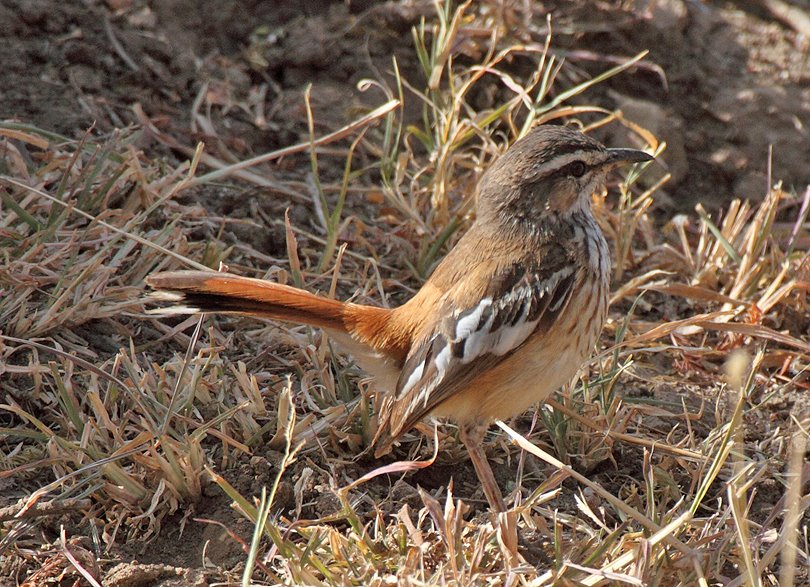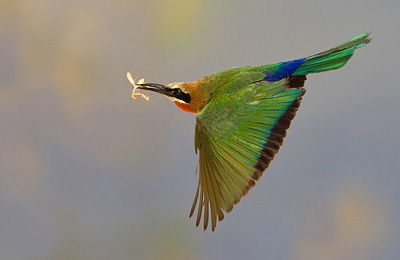
Photo@Peter Usher

Photo@Peter Usher

The Egyptian Vulture is the smallest of all the African Vultures.This vulture flies with more wingbeats than most vultures, but takes off much more gracefully, as it is built lighter and smaller. Once gliding, the bird holds its wings flat, shifting them very little. The bird posesses great endurance, and is able to fly up to 70 kilometers in search of food.Egyptian vultures are specialists in egg-eating. They are among the only known birds in the world to use stones as tools. They will repeatedly strike at an abandoned ostrich egg with stones, then use their beak to enlarge the hole and penetrate membrane. This behavior is not instinctive, but learned from other vultures, as the species is very intelligent.

@Joseph Aengwo
 @Michael Sammut
@Michael Sammut
For the last two weeks, a pair of White-browed Scrub Robin have been nesting very close to my house! I have been observing them carefully and indeed I am impressed by the intelligence!!The timing of the breeding period is incredible, in the middle of a big rainy season and there was plenty of insect, which meant the young one will not go hungry and I supplied them with a bath bowel in form of a modified stone which they like it a lot.The good news is two days ago, the eggs were hatched and two chicks with a bright cream- white gape.This morning when I visited them in the nest, the chicks were developing fast and their tiny bodies were covered by feather.I wish them well as they continue with their parental responsibilities which up to now, they seem to be doing it perfectly.
Red-backed Scrub Robin, as this species is sometimes refered Lives mainly in the woodlands and savannah with thickets and tall grass. Fairly common resident in much of arid and semi-arid areas of East Africa. This small bird is light brown with darker streaks above. The rump is bright brown to orange; the tail is blackish tipped with white. Below it is white streaked with black. The eyes are reddish brown, the bill blackish brown and the legs and feet are pinkish brown it nests from September to January in building a bulky cup of course material near the ground in a grass tuft, shrub or thick clump of vegetation. The cup is lined with finer material. It usually lays three eggs, which are coloured white spotted with light brown and grey. Will foraging for its prey on the ground and takes insects in flight. The food consists of insects and spiders as well as berries and nectar.
Common in Lake Baringo and Bogoria, Tsavo West and East, Amboseli, Meru National park and Samburu National Reserve.Mostly call on top on trees parched.

Golden Pipit is a uniquely bright yellow underparts bird with a bold black band on the breast. Perhaps what is even unique about this pipit is that it is the only bird with a bare (featherless) tibiotarsi. On a closer look, you will observe that the bird has a bright yellow superciliary stripe and generally on flight it appears yellow with black wings.In Kenya they mostly seen singing on top of scrub bushes in Tsavo west and east, Samburu and Meru National reserve, Magadi road on your way to Lake Magadi and recently we have records of this bird in Lake Bogoria and Baringo.

White-fronted Bee-eater is such a colourful bird.It is one of that species you will spend time appreciating its beauty. The upperparts mainly green;black mask offset by whitish forehead, white chin and cheecks. The rump is deep blue with a cinnamon buff breast and belly. An easily seen and identified bird mostly confined in areas around northern part of Lake Nakuru National where it normally nest on the cliff burrows. Other than Lake Nakuru, they are also found in Hell’s Gate Park and sometime is Lake Baringo and Kerio Valley.